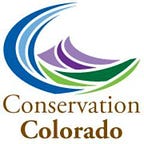Watch One Coal Mine Release Enough Methane Pollution to Undo Half of Colorado’s Work to Fight It
As an environmental organization, we try not to be too gloom-and-doom. But this story is too important to ignore. Although methane is invisible to the naked eye, it’s a powerful and alarming greenhouse gas. It’s even more potent in the short term than carbon dioxide, the most famous pollutant causing global warming.
Methane has been making headlines lately because of new rules from the Environmental Protection Agency about controlling methane from new oil and gas operations. While fracking and drilling contribute plenty of methane to the atmosphere, those industries are not the only culprits releasing methane into our air.
Unfortunately for our climate, coal mining can be another source of methane. Getting coal out of the ground requires breaking apart hard earth hundreds of feet below ground, creating cracks that allow methane to seep out and pollute our atmosphere. Some coal mines release more methane than others — and one of the worst is in Colorado.
In western Colorado, north of Black Canyon of the Gunnison National Park, lies the West Elk Mine. It’s an extremely controversial mine for a variety of reasons, including its location inside a pristine national forest, its exemption from a new moratorium on coal leasing, and the fact that it is owned by bankrupt company Arch Coal. But perhaps one of its biggest issues is its methane pollution.
To set the scene: the state of Colorado has some of the strongest rules in the nation for methane pollution from oil and gas activity. In 2014, Governor Hickenlooper passed a “zero tolerance” policy on these emissions, requiring drillers to capture 95% of methane and to find and fix all gas leaks.
However, as the Colorado Independent reports, “Unlike methane from oil and gas drilling, coal mine methane remains unregulated at both state and federal levels.”
The West Elk mine already releases 58,000 tons of methane per year. But, a proposed expansion to the mine could add enough methane to the air to negate half of the emissions prevented by Colorado’s methane rules for oil and gas.
Methane is invisible to the naked eye, but with an infrared camera you can see the damage being done every second. Here’s the West Elk Mine spewing pollution into the air.
As Conservation Colorado Executive Director Pete Maysmith put it, “I hope Governor Hickenlooper and leaders in the Obama administration recognize that this mine would roll back a large portion of the progress we’ve made in tackling methane on the state, national, and even international levels.”
We can’t allow this mine to expand when it’s already releasing huge amounts of uncontrolled methane. It would be easy for Arch Coal to at least burn the methane (a process called “flaring”), which would turn it to carbon dioxide before it reaches the atmosphere. Better yet, the company could capture the methane and use it for electricity.
Either way, working towards a solution will require public outcry. Help us spread this story so we can hold Arch Coal and our elected officials accountable.
For a more thorough look at this issue, check out this story from the Colorado Independent.
